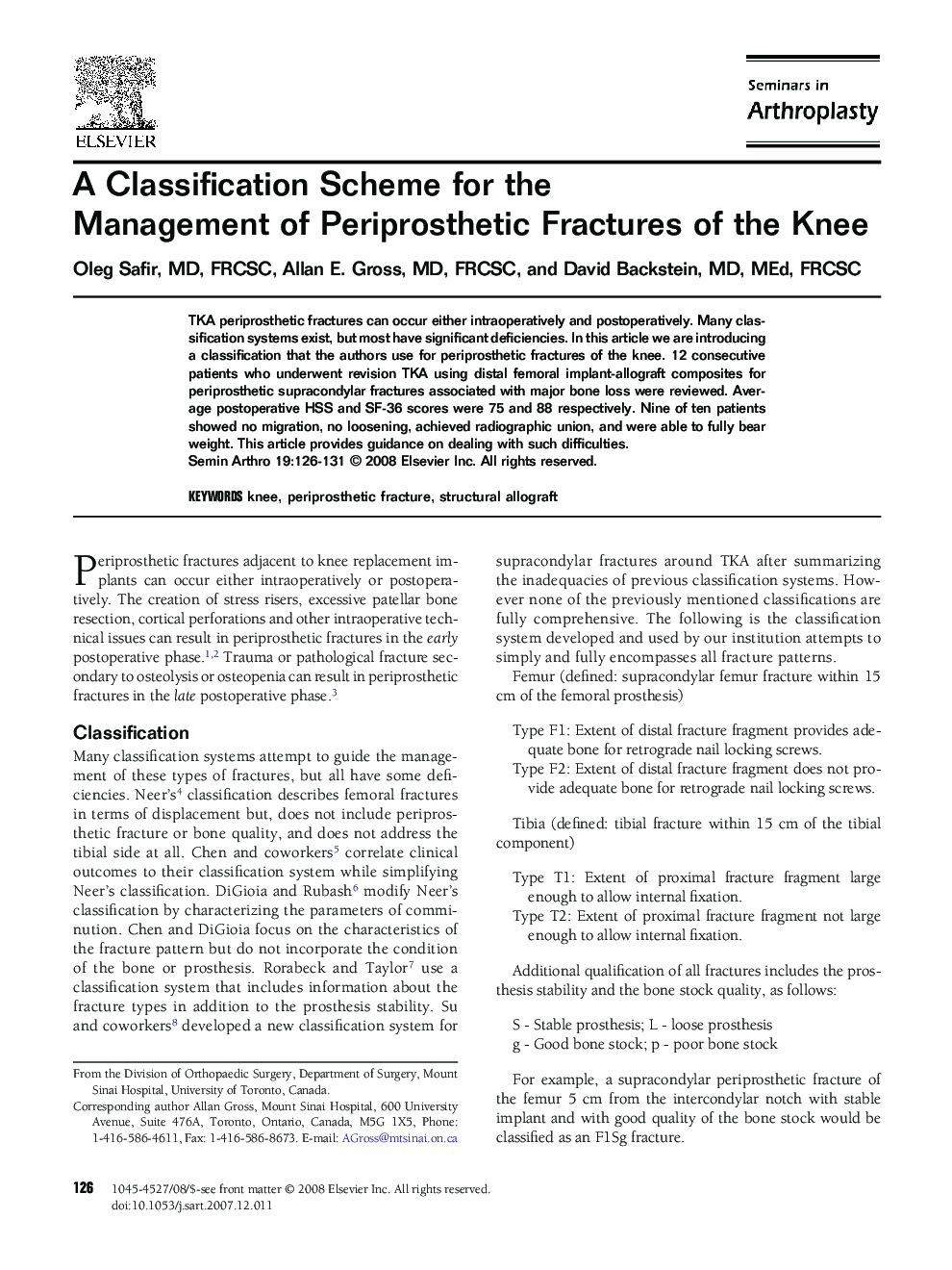| Article ID | Journal | Published Year | Pages | File Type |
|---|---|---|---|---|
| 4094447 | Seminars in Arthroplasty | 2008 | 6 Pages |
Abstract
TKA periprosthetic fractures can occur either intraoperatively and postoperatively. Many classification systems exist, but most have significant deficiencies. In this article we are introducing a classification that the authors use for periprosthetic fractures of the knee. 12 consecutive patients who underwent revision TKA using distal femoral implant-allograft composites for periprosthetic supracondylar fractures associated with major bone loss were reviewed. Average postoperative HSS and SF-36 scores were 75 and 88 respectively. Nine of ten patients showed no migration, no loosening, achieved radiographic union, and were able to fully bear weight. This article provides guidance on dealing with such difficulties.
Related Topics
Health Sciences
Medicine and Dentistry
Orthopedics, Sports Medicine and Rehabilitation
Authors
Oleg Safir, Allan E. Gross, David Backstein,
